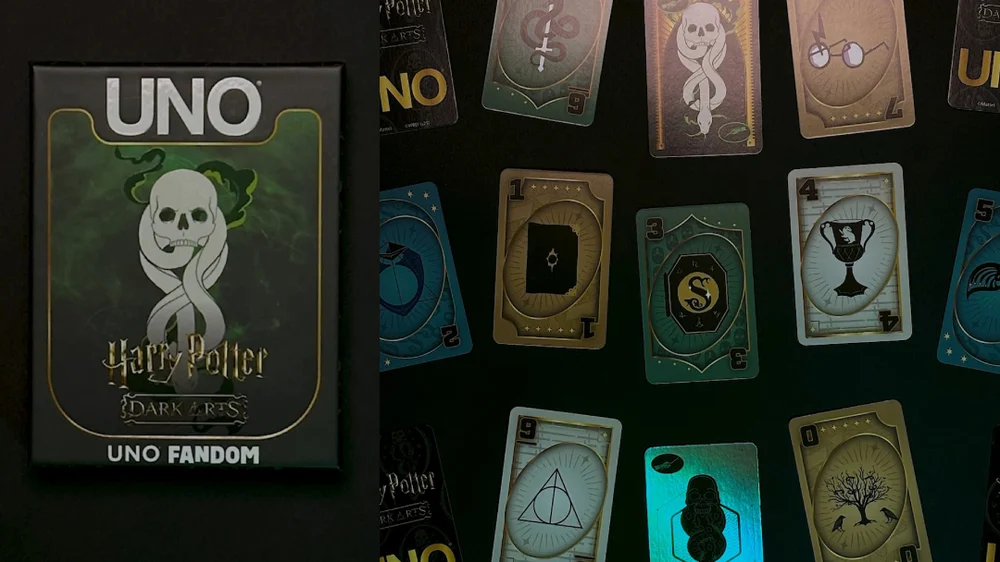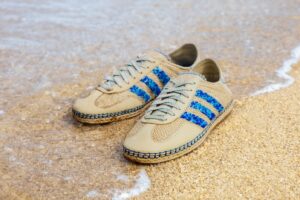The Spring/Summer 2025 collection from Ed Robert Judson arrives not as a fleeting season statement but as a focused exercise in discipline and design literacy. Drawing from industrial hardware, early 20th-century utility objects, and principles of mechanical engineering, the collection doesn’t merely reference function—it reconstructs it. The result is a tightly controlled offering of accessories that marry form with function, tactility with minimalism, and technical logic with contemporary use.
For SS25, Ed Robert Judson builds upon the label’s foundational ethos: not fashion for fashion’s sake, but objects of use—fashion as technical artifact.
Origins and Identity
Founded in Japan, Ed Robert Judson isn’t named after a designer, but after an imagined character—an engineer from the Industrial Revolution era whose life is an allegory for design integrity and anonymous craftsmanship. This conceptual core distinguishes the brand from trend-oriented labels. It instead pivots toward object-oriented thinking: bags, pouches, and wearable accessories become conduits of utility. They belong to a lineage of tools, not ornaments.
Judson’s team channels techniques from aeronautics, climbing hardware, industrial tailoring, and architectural detail. The brand’s commitment to anonymity, precise hardware integration, and quiet innovation has earned it a cult following in design-heavy circles—those who view a coin pouch as no less worthy of perfection than a museum piece.
A Breakdown of the SS25 Collection
The collection splits cleanly into two stylistic directions, unified by rigor in form. Each group feels like a separate system of logic—one vibrant and constructivist, the other subdued and organically functional.
BOX STITCH – The Technicolor Series
This series introduces a confident black-and-electric-blue colorway across modular and geometric accessories. There is a graphic, almost Bauhaus quality to the silhouettes—reminiscent of blueprints or digital schematics rendered physical.
- Tote Bag: Matte black body offset by electric blue handles, engineered with clean riveted seams. A minimal architectural statement, echoing Judson’s sense of “volume as utility.”
- Compact Wallets and Coin Holders: These pieces resemble industrial fasteners, with precise folding techniques, buttoned flaps, and compact storage hierarchies.
- Key Wire Tool: The BOX STITCH KEY WIRE with retractable cable resembles a climber’s belay tool or a mechanic’s tether—proof of the brand’s fascination with mobility and restraint.
- Dog Collar: Not merely a lifestyle addition, this collar nods to Judson’s expansive definition of “accessory.” The buckle hardware is a micro-study in tension-release systems.
There’s a coherent syntax at work: all parts function as a modular ecosystem of objects—each interlocking, folding, or clipping to the next. Blue, typically a symbol of calm, becomes here a tool of precision and alertness.
Neutral Series – Technical Minimalism
This side of the collection reverts to a more muted and natural palette: black pebbled leather, olive green calfskin, taupe canvas. Here, form follows more discreet pathways: rounded edges, supple materiality, collapsible pouches.
- Half-Moon Leather Sling: In textured black leather, this piece channels utilitarian sensuality. The curves and zipper placement suggest bodily proximity and ergonomic balance.
- Taupe Canvas Backpack: Stripped of embellishment, it speaks the language of early military rucksacks—field-oriented yet recontextualized for urban life.
- Mini Drawstring Pouches: These appear like soft mechanisms—drawstrings forming loops and knots that shift shape with motion.
- Zipped Wallets: Executed with restrained precision. The metal chain element hints at subculture—perhaps a nod to Judson’s fringe admiration for 1980s punk utility gear.
If the BOX STITCH set is rigid and analytical, the neutral group is organic and adaptive, with each piece designed to age, crease, and accumulate life.
Design Language and Materials
Central to Ed Robert Judson’s acclaim is its devotion to material manipulation and engineering mimicry. Every piece in SS25 undergoes structural evaluation as if it were machinery:
- Calf leather and horsehide dominate the leather range. Their density is calculated to allow construction without unnecessary stitching.
- Custom hardware—carabiner-inspired locks, retractable key wires, and stainless-steel fasteners—are sourced with almost obsessive specificity.
- Canvas and nylon are treated to mimic raw functionality without sacrificing durability.
Everything serves a mechanical metaphor—a pouch is not stitched; it’s riveted. A handle isn’t decorative; it’s load-bearing.
The Work Ethic Behind the Brand
Ed Robert Judson operates outside the conventions of fashion cycles. The SS25 collection wasn’t made to meet deadlines but to fulfill a purpose. That purpose often arrives as a design problem—how to fold, fasten, or enclose an object better than before. Only after resolution does Judson’s team consider public presentation.
The brand’s work ethic is non-performative, meditative, and severe. Many items are made in limited runs due to the complexity of assembly and sourcing. Their workshops emphasize karakuri logic—Japanese mechanical automation—where movements are seamless and intention is hidden beneath elegance.
Rather than visual identity, the philosophy of quiet complexity defines the Judson aesthetic. It is this ethos that aligns it with adjacent cult brands like Hender Scheme, Veilance, or The Viridi-Anne—labels for whom fashion is just a byproduct of innovation.
Contemporary Context and Trends
In 2025, amidst a flood of AI-generated garments and performance-wear hybrids, Ed Robert Judson’s SS25 collection feels surgically clear in intent. It resists algorithmic over-design. Instead, it’s tailored to the mind of a user who values:
- Modular structure over branding
- Technical fidelity over flamboyance
- Longevity over seasonal novelty
Within current design discourse, Judson’s restraint feels radical. While luxury giants chase louder aesthetics, Judson silently redefines luxury as mechanical trust.
Cultural Placement: Where Does It Belong?
Judson pieces are not for every consumer. They resist passive ownership. You must engage with them—understand the lock, unfold the compartments, wear them often to soften the edges. That’s why Judson’s customer base leans toward:
- Industrial designers
- Architects
- Product engineers
- Collectors of functional art
SS25 reinforces Judson’s place in the functional craft movement—not just as an accessory maker but as a contributor to object philosophy.
Closing Thoughts: The Future in the Fold
The Spring/Summer 2025 collection from Ed Robert Judson doesn’t attempt to forecast trends. Instead, it continues its meticulous internal journey—a conversation between machine logic and human need.
Each item is an answer to a question most brands don’t bother asking anymore: how can an accessory be truly useful and emotionally durable at once? In doing so, Judson quietly expands the realm of what fashion can be: not fantasy, not ephemera, but engineering you live with.
No comments yet.









